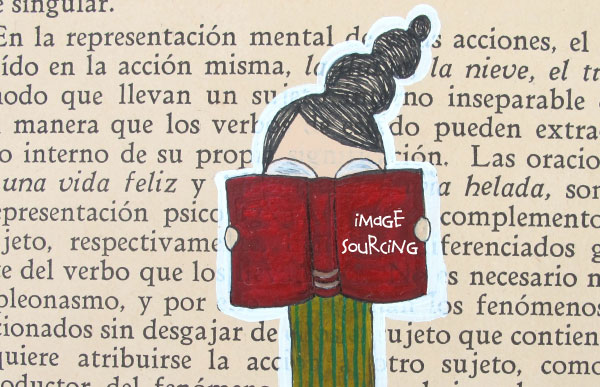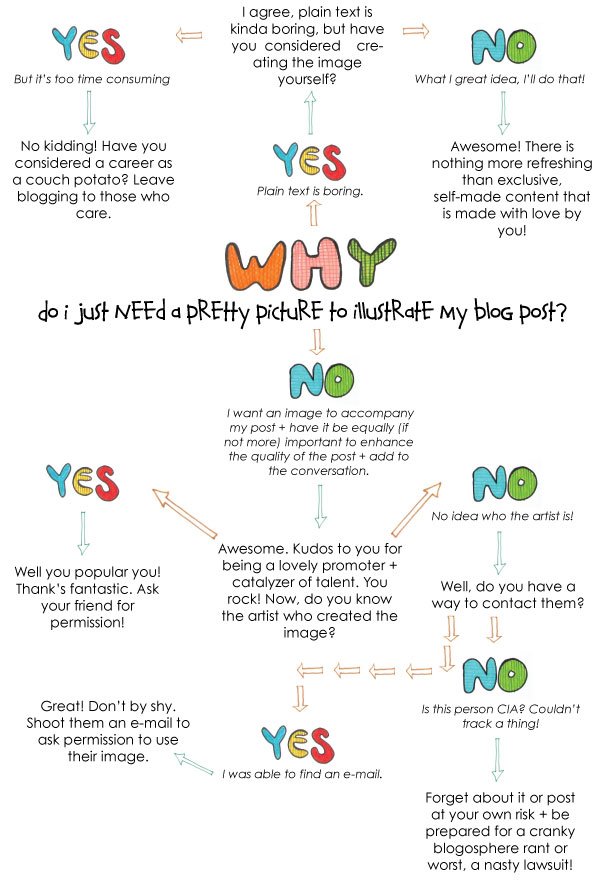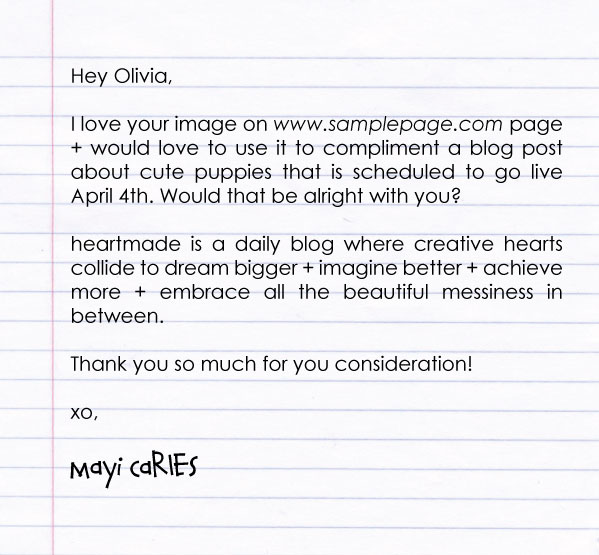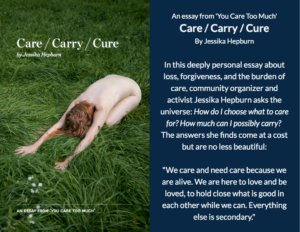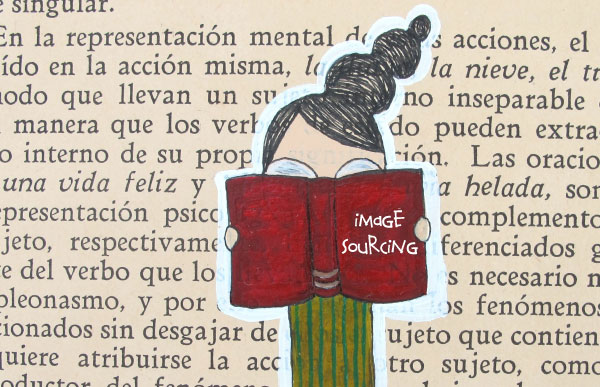
by Mayi Carles from heartmade
I’m not the image police, nor do I intend to be. As a matter of fact, not so long ago I was convicted of a felony for mistakenly using an image. So there you have it, I’m not perfect! But due to my recent “shame” with image sourcing, man have I studied this case thoroughly. Because who likes tripping over the same stone twice, know what I mean? Plus, if I can save you the pain + embarrassment of going through it yourself, then I will have paid my dues to society + probably won a few steps to heaven too.
Let me start by saying I’m a very visually oriented person. So when conceiving my blog heartmade I knew I wanted to use lots + lots of images + well-designed layouts + beautiful collage + breath-taking graphics to tell my stories + share my ideas + celebrate creativity + post inspirations. So you can see why the issue of image sourcing, particularly when it comes to blogging, is so crucial for me to nail.
After months of research – asking around the blogosphere + inquiring artists in my community who I trust + making a few mistakes along the way too – I’ve come to accept that there is no such thing as a universal controversy-free image sourcing policy. But then again I’ve never appreciated fixed manuals of operation + stone-written dogmas, so you’ll soon find out today’s post is not about preaching or teaching; it’s about thinking + reflecting. I won’t tell you what to do, but I’ll sure make you ponder + revisit + if I’m successful even re-valuate your image sourcing etiquette.
let’s play a little jiminy cricket game
nuts + bolts of permission letters
When writing the permission note you should consider:
- Making it personal.
- Being specific.
- Making it short + sweet.
- Telling them a little bit about your blog.
- Including a URL to your blog.
- Telling them when the feature is scheduled to go up.
- Giving thanks for their consideration.
It’s important because…
- It shows you care.
- It set’s you apart from other bloggers.
- It helps spread the word about your blog + message.
- It has the potential to make someone smile, because come on who doesn’t love a cool feature?
- It invites people whom you admire to love your blog + join your tribe.
- It creates the platform for a wonderful friendship.
wait! there’s more
- Make an honest effort to create your own images.
- When utilizing images from others, credit everything + everyone – the maker + the source + the moderator (in that order).
a. Use “by” when you are referencing who created the image. When you can’t find the photographer who created the image reference the publication + shop + blog who it was originally created for.
b. Use “via” when referencing where you got the image from (i.e blogs + magazines + personal websites). Ohh + please be aware Pinterest + Flickr + Etsy + We Love Indie + such sites are not sources.
c. Use “found” when acknowledging who guided you to a particular image (i.e a friend + a fellow blogger).
3. Go out of your way to track down all that you can about the image you’re utilizing. Use tineye.com to help you look up the source of the image you are using. I need to thank Jess from Epheriell Designs for this awesome tip.
4. If you can’t find much information about the image you want to use, don’t use it.
5. Your image credits should be active links, not just text.
6. Credits shouldn’t be displayed in size 2 font. Please make your credits visible + worth the effort.
7. The image itself should be an active link too. This will allow visitors to track the original source easily. This is especially awesome when utilizing product photos + people can actually buy the item at hand. Talk about good karma – to aid a sale instead of cutting corners, right?
8. It’s especially nice if you can also make mention of the images you are using in the post itself, so it doesn’t look like you just have it there to fill space.
9. Never use images from newspapers + publications + big companies + without written permission. You never know when legal restrictions apply + you can be placing yourself in a hot big mess.
10. Never ever remove a watermark from an image or modify an image without permission.
11. Only post singular images, never a collage + layout or an entire step by step DIY or recipe that has been made by another designer without written authorization.
12. Whenever in doubt, I always ask first.
It all boils down to giving people enough information for them to be able to go back + track all your steps. If you’re in the business of building communities + promoting originality + celebrating kindness, then you definitively want to take extra caution when sourcing.
yeah, so why should I care?
Aside from the obvious, because doing what’s right + ethical feel so darn good, proper image sourcing is important because one misstep could really hinder your reputation or even worse, you could be perceived as someone who steals other people’s work + that’s no fun! I know most people aren’t trying to be disrespectful, but not being aware just isn’t a good excuse in this day + age.
Today you can choose to be known as someone who generates unique + creative content that celebrates loves + kindness, or you can choose to promote a culture of laziness + mindless copy-pasting + careless free for all. The choice if yours. What will you choose?
Achieving excellence in image sourcing is certainly extra work, but it’s worth the effort. It certainly helps me sleep at night, which is all I want after a long day of work!
fantastic resources
Below is a list of some of the most amazing articles I’ve read while researching this topic.
Frolic: Blog Talk: Crediting Photos
Natalie Jost: A Word About Sourcing
Epheriell Designs: Taking it up a Notch: Image + Photograph + Source Credits
Design*Sponge: Copying + Stealing + Crediting
Design*Sponge: How to Credit
Jessika Hepburn: for inspiring me to put myself together + write this thing!
your turn please
Now, I would love to hear all you lovelies out there. What are your comments + ideas + tips about image sourcing? Anything you would like to add or suggest? Let’s continue this sensitive conversation in the comment section below, shall we?
xo,
Mayi Carles
Mayi Carles is a super passionate artist + avid eco-friendly designer + creative coach + editor of heartmade with big dreams + messy ideas + a severe cupcake addiction + a funny Panamanian accent. Mayi’s on a mission to empower creative hearts to dream bigger + imagine better + achieve more + embrace all the beautiful messiness in-between. To connect with Mayi, follow her tweets at @mayicarles.

